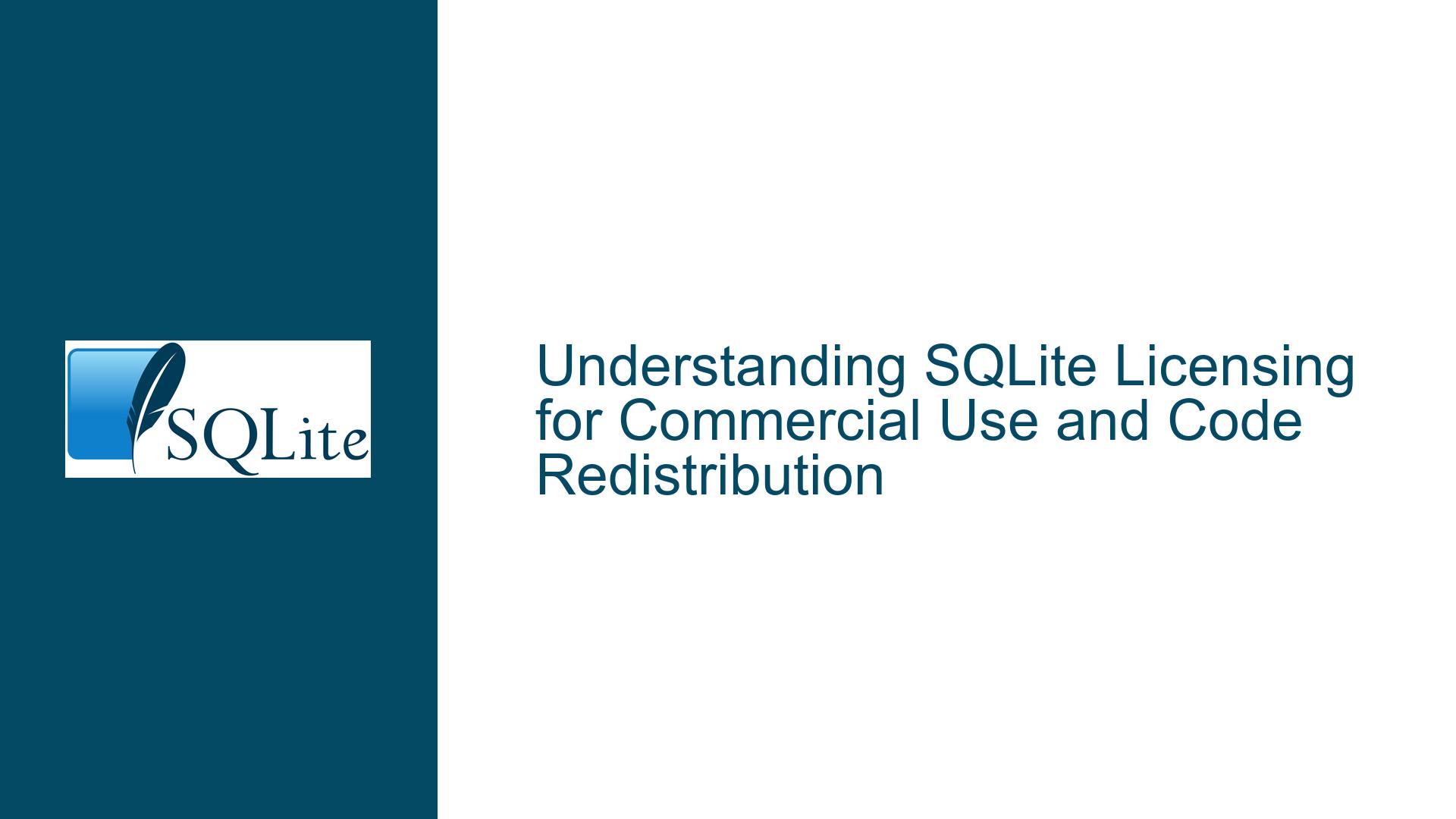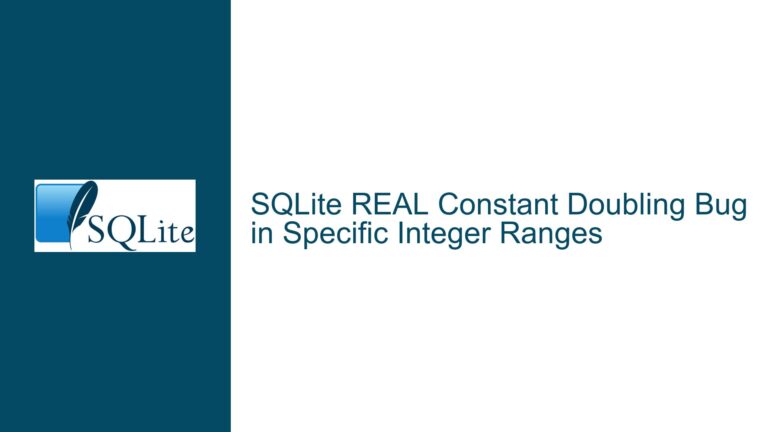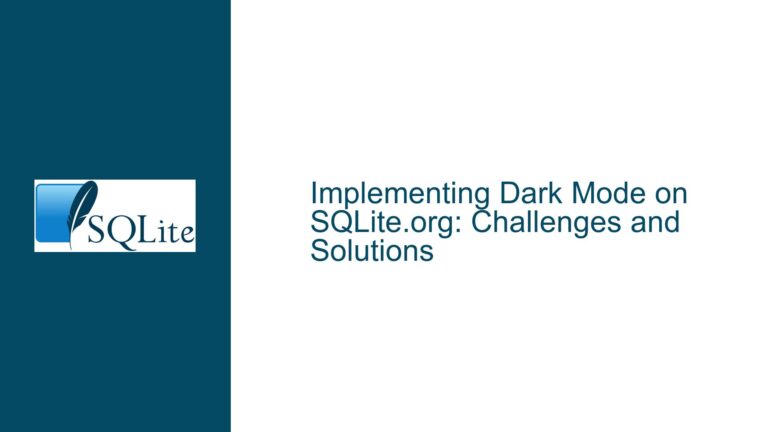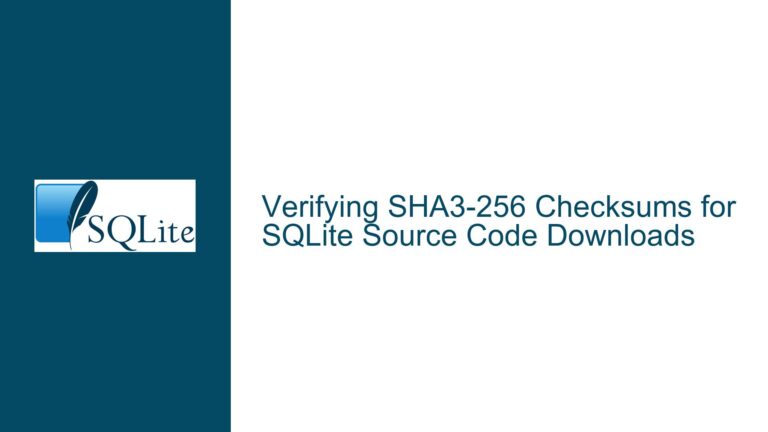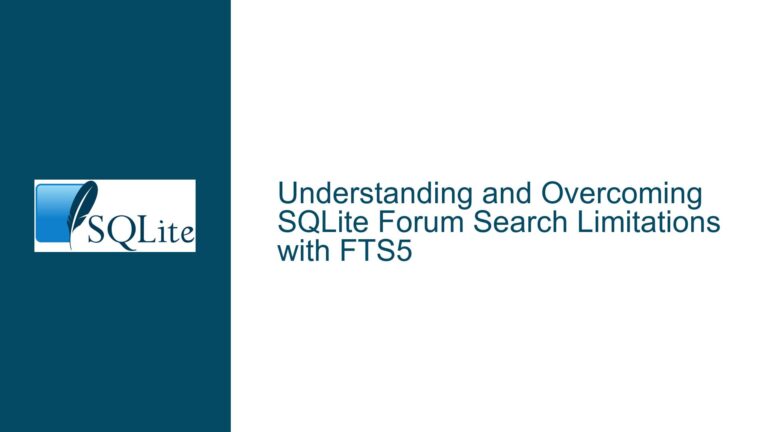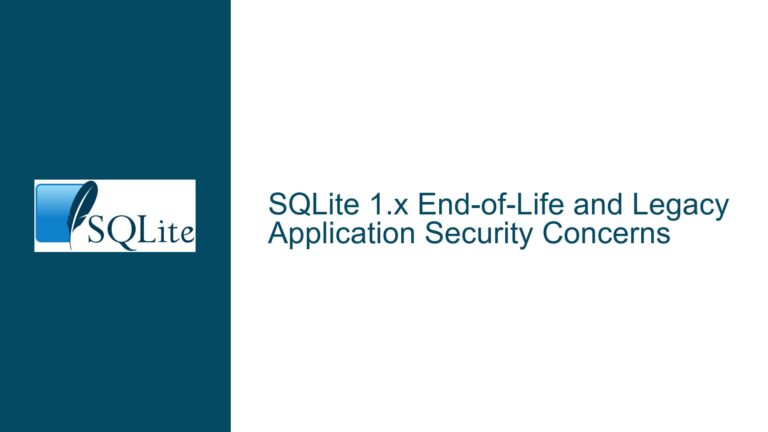SQLite Licensing for Commercial Use and Code Redistribution
SQLite’s Public Domain Status and Its Implications for Commercial Applications
SQLite is a widely-used, lightweight, and serverless relational database management system (RDBMS) that is released into the public domain. This means that SQLite is free for anyone to use, modify, and distribute without any restrictions. The public domain status of SQLite makes it an attractive choice for developers who are building applications that require an embedded database solution. However, the public domain nature of SQLite does not automatically extend to the applications or code that incorporate it. This distinction is crucial for developers who plan to commercialize their software, as it raises questions about licensing, redistribution rights, and intellectual property protection.
When a developer integrates SQLite into their application, the licensing of the application itself remains independent of SQLite’s public domain status. The developer retains full control over how their code is licensed, whether it is released under a proprietary license, an open-source license, or any other licensing model. This separation allows developers to commercialize their applications without worrying about SQLite’s licensing terms affecting their ability to control the distribution and resale of their code.
However, the public domain status of SQLite also means that anyone who obtains a copy of the database engine can use, modify, and redistribute it without any restrictions. This includes the version of SQLite that is bundled with a commercial application. Therefore, while the developer’s code is protected by their chosen license, the SQLite component remains freely redistributable. This can lead to confusion, especially when it comes to understanding the rights of end-users who purchase a commercial application that includes SQLite.
The Relationship Between SQLite Licensing and Application Licensing
The core issue revolves around the relationship between SQLite’s public domain status and the licensing of the application that incorporates it. SQLite’s public domain status means that it is not governed by any specific license, and it is free from copyright restrictions. This allows developers to use SQLite in their applications without needing to comply with any licensing terms or obligations. However, the application itself, including the code written by the developer, is subject to the licensing terms chosen by the developer.
When a developer sells an application that includes SQLite, they are essentially selling two distinct components: the application code and the SQLite database engine. The application code is governed by the developer’s chosen license, which may restrict or allow certain uses, such as redistribution or resale. On the other hand, SQLite, being in the public domain, can be freely redistributed and modified by anyone, including the end-users of the application.
This distinction is important because it affects how the application can be used and distributed after it is sold. For example, if a developer sells an application under a proprietary license that prohibits redistribution, the end-user is still free to extract and redistribute the SQLite component of the application. However, the end-user would not have the right to redistribute the application code itself unless the developer’s license permits it.
Protecting Intellectual Property While Using SQLite in Commercial Applications
Developers who plan to commercialize their applications must take steps to protect their intellectual property while still leveraging the benefits of SQLite’s public domain status. One common approach is to use a proprietary license for the application code, which restricts the redistribution and modification of the code by end-users. This ensures that the developer retains control over how their code is used and distributed, even though the SQLite component remains freely redistributable.
Another approach is to use an open-source license for the application code, which allows end-users to modify and redistribute the code under certain conditions. In this case, the developer must carefully choose an open-source license that aligns with their goals and ensures that their intellectual property is protected. For example, a developer might choose a copyleft license, which requires that any derivative works also be released under the same license, thereby ensuring that the code remains open-source.
Regardless of the licensing approach, developers should clearly communicate the licensing terms of their application to end-users. This includes specifying which components of the application are subject to the developer’s license and which components, such as SQLite, are in the public domain. Clear communication helps to avoid confusion and ensures that end-users understand their rights and obligations when using the application.
Best Practices for Licensing Applications That Include SQLite
To ensure that their intellectual property is protected while still benefiting from SQLite’s public domain status, developers should follow several best practices when licensing their applications. First, developers should choose a license for their application code that aligns with their goals and provides the desired level of protection. This may involve consulting with a legal expert to ensure that the chosen license is enforceable and meets the developer’s needs.
Second, developers should clearly document the licensing terms of their application, including any restrictions on redistribution and modification. This documentation should be included in the application’s user agreement or license file, and it should be easily accessible to end-users. Clear documentation helps to prevent misunderstandings and ensures that end-users are aware of their rights and obligations.
Third, developers should consider using a license management tool or service to enforce the licensing terms of their application. These tools can help to prevent unauthorized redistribution and modification of the application code, while still allowing end-users to freely use and redistribute the SQLite component. License management tools can also provide valuable insights into how the application is being used, which can help developers to identify potential issues and improve their licensing strategy.
Finally, developers should stay informed about changes to SQLite’s licensing status and any related legal developments. While SQLite is currently in the public domain, it is possible that its licensing status could change in the future. Staying informed helps developers to adapt their licensing strategy as needed and ensures that they remain compliant with any new legal requirements.
Conclusion
SQLite’s public domain status makes it an attractive choice for developers who need a lightweight and flexible database solution for their applications. However, the public domain nature of SQLite also raises important questions about licensing, redistribution rights, and intellectual property protection. Developers who plan to commercialize their applications must carefully consider these issues and take steps to protect their intellectual property while still leveraging the benefits of SQLite.
By choosing an appropriate license for their application code, clearly documenting the licensing terms, and using license management tools, developers can ensure that their intellectual property is protected while still allowing end-users to freely use and redistribute the SQLite component. Additionally, staying informed about changes to SQLite’s licensing status and related legal developments helps developers to adapt their licensing strategy as needed and remain compliant with any new requirements.
In summary, while SQLite’s public domain status provides significant flexibility and freedom for developers, it also requires careful consideration of licensing and intellectual property issues. By following best practices and staying informed, developers can successfully commercialize their applications while protecting their intellectual property and ensuring compliance with legal requirements.
